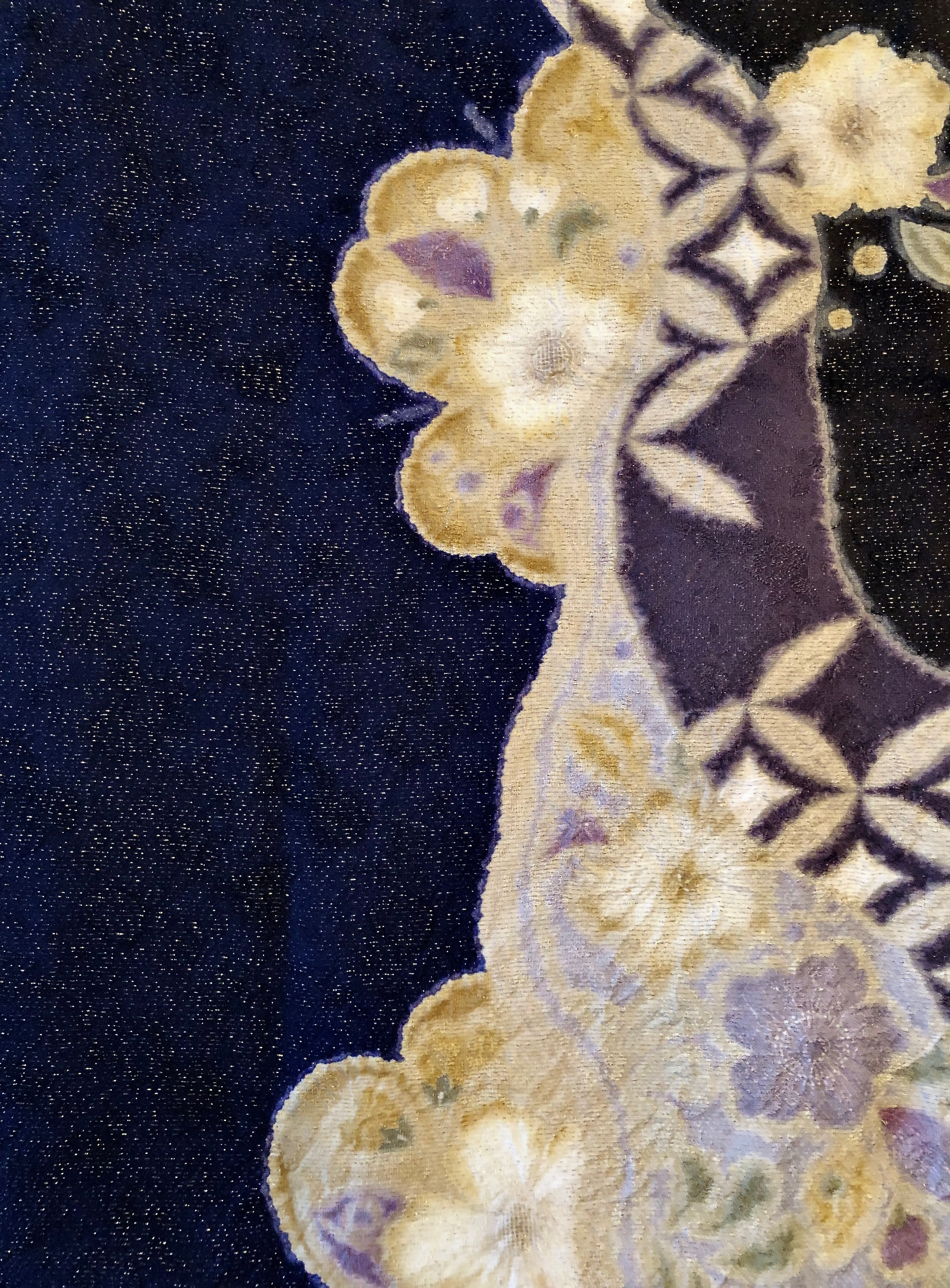











Japanese Vintage Silk and Shibori “FURISODE" Kimono
Dimensions: 66-0”L x 24-0”w x 26-0” Shoulder x 14-0” Shoulder Width x 45-0” Sleeve Length
Aside from this beautiful garment being completely unique, there is a beautiful and sublime combination of motifs incorporating Shibori techniques. This is a concept derived from Buddhist teachings which directly relates to what is known as “Wabi-Sabi”, which is the Japanese worldview or aesthetic centered on the beauty that is “imperfect, impermanent, and incomplete”.
This use of Japanese Shibori (one of the oldest indigo dying techniques in Japan) is a masterpiece made of 100% silk and a type of Kimono called “FURISODE”, which has long sleeves and is considered the most prestigious garment to wear for special occasions. Kimono of this type and character have different meanings, symbolizing dreams and wishes, (Dreams being things we want to achieve in life, whereas wishes are our hopes and desires for things to happen). A Kimono visual message is that "the longer the sleeves the younger the girl; the shorter the sleeves the older the woman for Furisode sleeves are sewn shorter as the wearer ages, or after marriage". The fabric has artistically embossed flower shapes on a ground of Deep Navy Blue, Greenish Blue, and Black colorations. It has intricately embedded gold thread throughout the garment as if looking at the midnight sky.
The Shibori artists that created this magnificent textile used a technique called Nui Shibori which is the most detailed of all the Shibori techniques and is as much about stitching as it is about dying. By using hand stitching techniques and wooden dowels to create resists, the outcome of this process is carefully crafted and captivating designs with accurate patterns. Finally, tie-dye tends to draw from a focused color spectrum, and like the design shown in this garment employs a method to work in harmony with the type of dyed cloth achieving elaborate results.
Condition: Excellent with minimal wear with no noticeable blemishes or damage. It has retained its woven gold thread throughout the garment and its embossed finish of flower shapes on the ground, creating an outcome being unique as the object itself.
Additional Information: In Japan, the earliest known example of cloth dyed with a Shibori technique dates from the 8th century; it is among the goods donated by Emperor Shōmu to the Tōdai-ji in Nara. Until the 20th century, not many fabrics and dyes were in widespread use in Japan. The main fabric construction utilized silk, hemp, and later cotton. The main dye color was Indigo, (Indigo is a rich color between blue and violet on the visible spectrum, it's a dark purplish blue), and to a lesser extent of black and purple.
Return Policy
Our antique/vintage pieces are identified/described and professionally photographed, and considered, “as is”, therefore all sales are final. Read our full refund and return policy.


